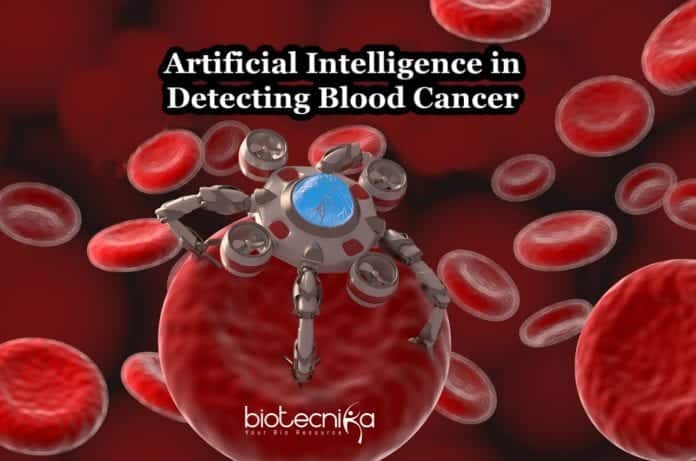AI detects blood cancer- Detecting Blood Cancer using Artificial Intelligence
New research has found that one of the most common forms of blood cancer – acute myeloid leukemia (AML) can be detected using Artificial Intelligence. AI can detect this blood cancer with high reliability.
This research study was published in the iScience journal and it said that the research team’s approach was based on the gene activity of cells found in the blood. They said this can possibly accelerate the beginning of therapy and could support conventional diagnostics.
The symptoms of AML, in the early stages, can resemble those of a bad cold but AML should be treated as quickly as possible as it is a life-threatening disease.
A research group leader at the German Center for Neurodegenerative Diseases (DZNE), Joachim Schultze said, ” On the basis of our study, with a blood test, it seems possible that the suspicion of AML can be cleared quickly by the family doctor.”
Schultze, who is also Head of the Department for Genomics and Immunoregulation at the LIMES Institute of the University of Bonn in Germany added that ” The patient is referred to a specialist when the suspicion is confirmed. The diagnosis could
then happen much earlier leading to early therapy.”The researchers focused on a kind of fingerprint of gene activity, called the “transcriptome” for this study.
Only certain genes in each and every cell, depending on its condition, are actually “switched on” that reflects in their gene activity profile.
In the current study on AML, the exact same data were derived from cells in blood samples and spanning many thousands of genes was analyzed.
Schultze said, ” There is important information about the condition of cells found in the transcriptome. The classical diagnostics are however based on data that are different. Therefore, we wanted to find out what can the analysis of the transcriptome using artificial intelligence, i.e., trainable algorithms, achieve.”
For the study, samples from around 105 different studies and data more than 12,000 blood samples were considered.
The samples were taken from around 4,100 individuals who had been diagnosed with AML, the remaining ones had been taken from healthy individuals or from individuals with other diseases.
The researchers had parts of this data set fed in their algorithms. The information about the sample, if it came from an AML patient or not was included in the input.
Schultze said, ” Then, the transcriptome for disease-specific patterns were searched by the algorithm. This process is called machine learning and it is a largely automated process.”
Further data was analyzed based on this pattern recognition and the algorithms classified samples into two categories – Samples without AML and AML containing samples.
Schultze said, “Conventional diagnostics could be supported by this method using artificial intelligence when it is used, and it can help save costs.”
AI detects blood cancer – SOURCE



























